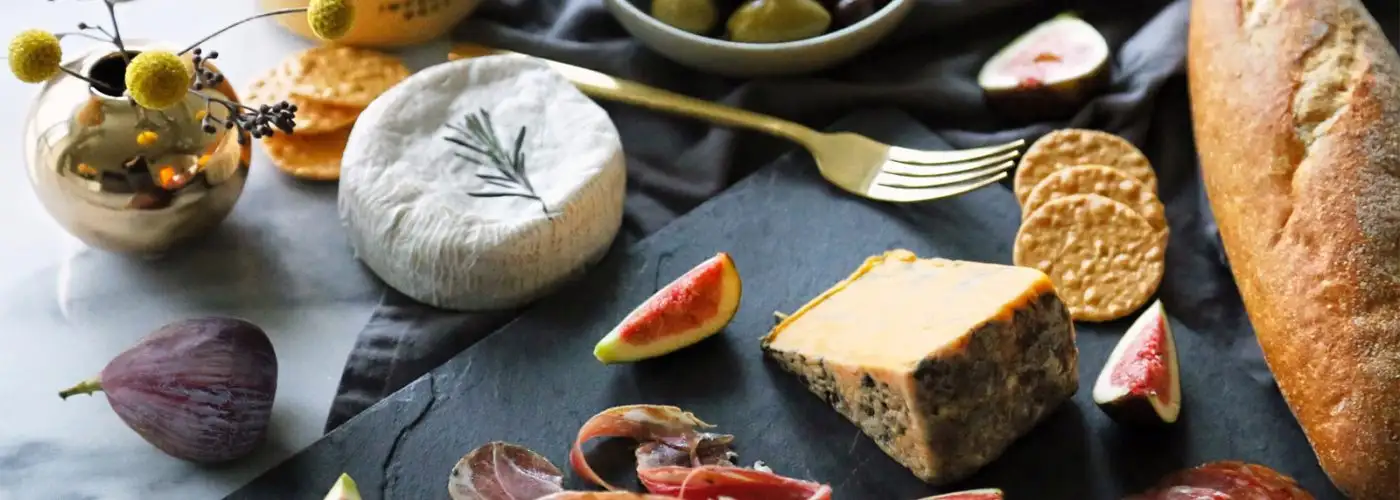Wondering what’s on the menu for 2015? Culinary tourism is on the rise, fed by a growing passion among travelers for local cuisine and an inexhaustible appetite for sharing their food pics online. From cutting-edge ingredients (insects and invasive seafood) to going back to the basics (foraging and communal tables), today’s chefs and food purveyors are finding new ways to feed people’s passion for food, enabling them to feast their way around the world. So head off the eaten path and look out for these hot food trends in your travels this year.
Image Gallery
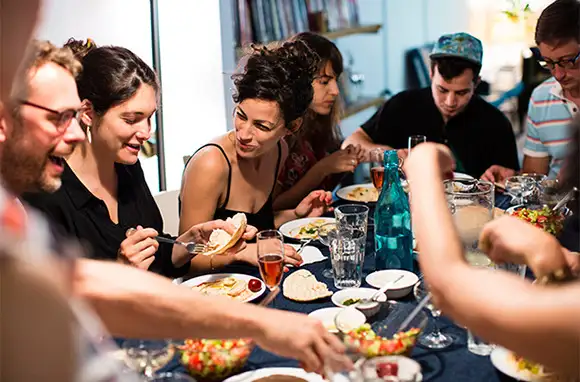
Meal Sharing
Last year, the sharing economy entered the mainstream, and in 2015, you can expect to see its bourgeoning meal-sharing segment step into the spotlight. New and expanding peer-to-peer platforms like Cookapp, EatWith, Feastly, and Meal Sharing help get more travelers off the restaurant track and into local abodes, where they can connect over authentic, home-cooked meals.
"Meal sharing as a practice isn't necessarily new: Supper clubs and dinner parties and other such informal models have been around a while. But meal-sharing businesses are very much emergent," says Rachel Greenberger, director of Food Sol, an action tank for food entrepreneurship at Babson College. Jay Savsani, founder of Meal Sharing (a site that started in 2013 and now includes 450 cities worldwide), says, "It's obviously a new hot trend, but I see it as reimagining an old paradigm. Now we're getting back to having meals in people's homes." The site allows chefs to create a "storefront" to advertise their meal offerings, and guests can select the type of food they'd like and then meet up. At the end of the meal, both chefs and guests review each other, which builds a system of safety and trust.
So why does meal sharing appeal to so many travelers today? Greenberger says, "Food is such a natural portal into understanding a place—current culture, traditions, and values, as well as natural, agricultural, and colonial histories. Entering someone's home can give the traveler an intimate look into someone's world and daily life that dining out simply never can." According to Jessica Festa, editor of Epicure & Culture, an online magazine dedicated to immersive culinary experiences, "Travel is largely about having novel experiences. I believe the meal-sharing trend is emerging because people want to try new things and break away from the same old."

Meal Sharing
Last year, the sharing economy entered the mainstream, and in 2015, you can expect to see its bourgeoning meal-sharing segment step into the spotlight. New and expanding peer-to-peer platforms like Cookapp, EatWith, Feastly, and Meal Sharing help get more travelers off the restaurant track and into local abodes, where they can connect over authentic, home-cooked meals.
"Meal sharing as a practice isn't necessarily new: Supper clubs and dinner parties and other such informal models have been around a while. But meal-sharing businesses are very much emergent," says Rachel Greenberger, director of Food Sol, an action tank for food entrepreneurship at Babson College. Jay Savsani, founder of Meal Sharing (a site that started in 2013 and now includes 450 cities worldwide), says, "It's obviously a new hot trend, but I see it as reimagining an old paradigm. Now we're getting back to having meals in people's homes." The site allows chefs to create a "storefront" to advertise their meal offerings, and guests can select the type of food they'd like and then meet up. At the end of the meal, both chefs and guests review each other, which builds a system of safety and trust.
So why does meal sharing appeal to so many travelers today? Greenberger says, "Food is such a natural portal into understanding a place—current culture, traditions, and values, as well as natural, agricultural, and colonial histories. Entering someone's home can give the traveler an intimate look into someone's world and daily life that dining out simply never can." According to Jessica Festa, editor of Epicure & Culture, an online magazine dedicated to immersive culinary experiences, "Travel is largely about having novel experiences. I believe the meal-sharing trend is emerging because people want to try new things and break away from the same old."

Edible Insects
The locusts are coming … to a restaurant near you. Yes, edible insects have become a trend, and you can expect to see more and more of them crawling onto menus in the next few years. As someone who simultaneously recoils upon seeing bugs and shows Buddhist compassion by escorting them outside rather than smashing them, this is a hard one for me. But despite my heebie-jeebies, I can't deny the many good reasons for eating them: As a sustainable protein source and for nutrition and flavor.
According to Monica Martinez of Don Bugito, an edible-insect street-food project based in San Francisco, "More people in general are more aware of their diets and want to eat healthier; this is where farmed insects come into play—we are only offering a new protein alternative that happens to be tight with amazing ecological and sustainable practices." She believes that incorporating insects into everyday diets could reduce animal husbandry and have a positive impact on farmland, but more, it's nutritious, too. She adds, "Insects are rich not only in proteins but [also] amino acids and contain the good kind of fat found in nuts with no cholesterol or saturated fats usually found in meats." Her "pre-Hispanic snackeria" includes menu items such as mealworm ice cream and wax moth-larvae tacos (apparently, waxworms taste like pork rinds).
Hardly a new phenomenon in countries like Thailand and Mexico, where insects-as-food is part of the culture, noshing on grasshoppers, mealworms, and other creepy crawlers has become apropos in some of the world's trendiest restaurants. At hyper-locally sourced noma, considered by many to be the best restaurant in the world, Danish chef René Redzepi uses the formic acid in ants as an alternative to citrus flavoring, since lemons don't grow in Denmark. Often given accolades for its romantic atmosphere, Archipelago in London lets you rendezvous with its Love Bug Salad tossed with pan-fried crickets and locusts. Insects might even appear on your next flight: Last fall, JetBlue announced a partnership with AccelFoods, which includes Exo cricket-flour protein bars in its snack portfolio.
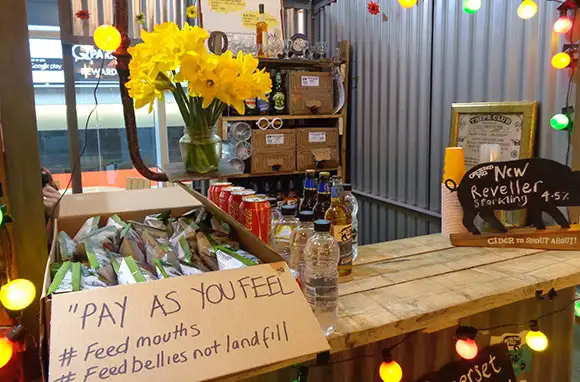
Food-Waste Reduction
The old proverb "Waste not, want not" still holds true today, perhaps more so than ever. About one-third of the world's food winds up in landfills, according to a study published in February by The New Climate Economy. This includes leftovers, "expired" food, and produce that simply doesn't measure up to cosmetic standards. Horrifying notion, right? But the good news is that a slew of organizations are actively working to tackle the food-waste problem and bring it into the limelight.
Dana Gunders, staff scientist at Natural Resources Defense Council, says, "There are widespread public campaigns to raise awareness and provide easy ways for people to take action. For instance, the Love Food Hate Waste campaign in England was successful in reducing avoidable household food waste by 21 percent in a five-year period. France just enacted a national pacte against food waste that has several prongs to it. And the European Union has committed several million dollars toward a project to better measure and monitor food waste as well as develop policy recommendations to address it."
This "ugly vegetable movement" is also in motion at the local level, offering diners the chance to do their part by feasting on recycled fare. Opened in Copenhagen in 2013, Rub & Stub (a personal favorite of mine) serves quality meals made with the city's rejected produce, seafood, and bread. Similarly, in England, The Real Junk Food Project opened its first "Pay As You Feel" surplus-food cafe in Leeds in late 2013. Last year, French supermarket Intermarché launched its inglorious fruits and vegetables campaign, selling misshapen produce at a 30 percent discount.

Invasive Seafood
What do lionfish, Asian shore crabs, and blue catfish have in common? They're taking over our waterways and our dinner menus. Considered invasive species, these non-indigenous sea creatures are wreaking havoc on our ecosystems by causing loss of biodiversity (a single lionfish can reduce the numbers of native reef fish in its territory by almost 80 percent in just a few weeks). However, many restaurant chefs believe that incorporating them into dishes will help restore the habitats they damage.
Chef Bun Lai, who created the world's first invasive-species menu a decade ago at Miya's Sushi in New Haven, Connecticut, says, "By collecting invasive seafood on shell-fishing beds, Miya's is providing a weeding service. We strive to be like the Musahar, the rat-catching people of India, who serve as an ecologically healthy, pesticide-free way of ridding farms of crop-destroying rodents." Miya's has two boats and nearly 100 acres of certified shell-fishing grounds to collect Asian shore crabs, which face the fate of becoming Lai's signature Kanibaba dish (a crab roll stuffed in a potato skin and topped with toasted cheese).
Regarding the troublesome lionfish, chefs Michael Schwartz and Thomas Tennant of Michael's Genuine at Camana Bay on Grand Cayman believe that "we must eat them before they eat everything," and the two organize dives to catch and later cook the fish (tantalizing preparations include lionfish tacos and lionfish sliders with Scotch bonnet aioli).
As the trend catches on, expect to see more menus include invasive seafood species and even expand to incorporate invasive birds, mammals, and plants. At Miya's, for example, chef Bon Lai serves sodas made from invasive burdock and dandelion root.
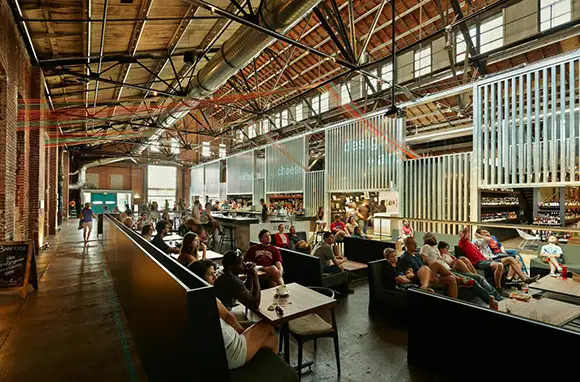
Food Halls
Gone are the fast-food days of Panda Express and Cinnabon. Today's food courts are far more discerning when it comes to taste and quality. A combination of communal gathering space, upscale dining hall, and grocer, these new gastro-emporiums, or food halls, are chock-full of celebrity chefs, artisan producers, and specialty purveyors. Stunning in their designs, they are destinations unto themselves. While the general concept has been around for a long time, especially in places like Europe (think Harrods in London and Galeries Lafayette in Paris), there has been a boom both internationally—as with the new Markthal in Rotterdam, dubbed the "food walhalla of the Netherlands"—and in the U.S., where the trend is sweeping the nation in cities both large and small.
According to Justin Croft of Zeppelin Development, the company that built
The Source food hall in Denver, "Food or market halls have been an integral part of the human experience for millennia; we've just lived through a blip in human history over the last half century where everything became decentralized and revolved around the automobile. Strip malls are ultimately a failed experiment, and food halls are an expression of society correcting itself. They represent a more human experience."
Originally intended for New York City, Locale Market (opened in December 2014 by James Beard Award-winning chef Michael Mina and chef and author Don Pintabona) puts St. Petersburg, Florida, on the map as a culinary destination. According to Leroy Bridges, media and content manager of Visit St. Pete/Clearwater, "Everything served inside is from the state of Florida (except maybe wine)." As for what makes it most appealing to customers, he says, "It's the number of offerings, from its own bakery to fresh pulled mozzarella, all under one roof."
A number of other new food halls opened in the U.S. in the past couple of years, with several more planned for 2015 and beyond. Most recent additions include Stir Market in Los Angeles, Hudson Eats and Gotham West Market in New York, and Krog Street Market, the first of its kind in Atlanta. This year, celebrity chef Richard Sandoval plans to open a Latin-themed food hall in Chicago's Block Thirty Seven building, and looking further ahead, the James Beard Public Market is set to break ground in Portland in 2018.

Foraging
Get ready. Your food is about to get wild. As passion for local food increases, heading into the woods to forage for mushrooms, berries, nuts, and roots has started a new era of the hunter and gatherer. Except, rather than circling around a fire, people get to indulge in post-excursion tasting menus and creative craft cocktails at local restaurants. This renewed interest in wild food has prompted chefs to hire in-house foragers and create "hyper-local" menus and inspired tour companies to take groups of curious eaters—basket in hand—into the forests.
According to Alan Muskat of No Taste Like Home, a foraging tour company based in Asheville, North Carolina, "Foraging is not just a trend; it's a necessity. We all know why going local is important and rewarding, and so now the movement is going 'hyper local.'" Muskat keeps his "Wild Food Adventures" informative but fun. He says, "They are more entertaining than [people] expect. I use a lot of jokes, poems, and stories, and I also give them time to explore."
Anyone who is pro foraging will attest to its many benefits, such as adding interest to menus, offering healthy and sustainable food alternatives, and allowing people to directly connect with nature in an enjoyable way. It's fun for the chefs, too. Chef Jonathon Sawyer of Trentina, a new northern Italian-inspired restaurant in Cleveland, says, "We love getting our hands on fresh ingredients that spur innovation and creativity in the kitchen and on a dinner plate." With help from larder master and wild-food forager Jeremy Umanskym, the restaurant uses more than 70 species of fungi and more than 150 different plants, including local species of wild carrot seeds, spicebush berries, and sumac.
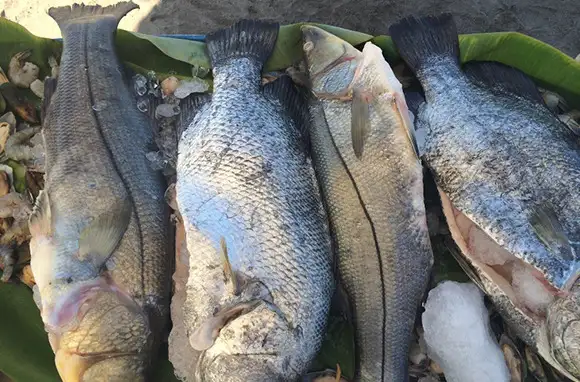
Hook and Cook
Go fishing or hunting for your dinner? Like foraging, the "hook and cook" concept, where people can catch their own food and then learn how to prepare it, is giving travelers an interactive way to get back to the basics and in touch with the source of their food while on vacation. According to Pamela Murski of Murski Homestead Bed & Breakfast in Brenham, Texas, "This experience can include hunting 'cock-a-doodle-do' [and then] producing the delicious Southern fried chicken with locally made buttermilk."
Murski's B&B offers seasonal cooking classes that cater to guest requests, such as how to prepare venison or how to process a whole chicken (and avoid waste). She says, "People are desiring to be more connected in an organic way, to be fully in charge of their lives, including how and where their lifeblood food source is coming from, and to be completely self-sustaining. For all these reasons and more, I believe this trend will only heighten and grow."
At CasaMagna Marriott Puerto Vallarta Resort & Spa, guests can meet local fishermen and then select which fish they want to be prepared for dinner at the resort. According to general manager David Gauna, "As travelers begin to seek out unique culinary experiences, catch-of-the-day programs allow guests to immerse themselves in the local dining culture. Not only are guests able to taste local flavors, they are able to take it a step further and engage in the entire culinary process—from catching the seafood to selecting authentic flavorings to, of course, enjoying the meal that same day."
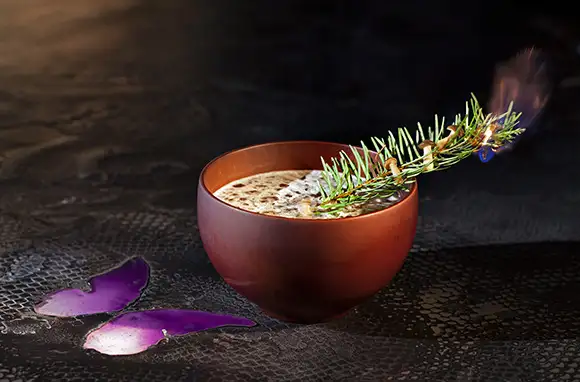
Savory Cocktails
Craft cocktails have been on the rise the past few years, but more mixologists are pushing boundaries by adding savory flavors to their cocktail shakers. These culinary cocktails go beyond the Bloody Mary or dirty martini by mixing in ingredients such as exotic chilies, fungi, and even meat.
I was lucky enough sample a savory cocktail at Artesian, a London bar voted as one of the world's best. Inside the decadent Langham Hotel, bartenders incorporate mushrooms, seaweed, tree barks, and leather into unconventional drinks such as the Will of the Woods, inspired by the scent of the forest floor. According to head bartender Alex Kratena, "Both guests and bartenders are looking for new ways to excite their palate—it seems like novelty to us because most cocktail cultures are Western-oriented. It is unusual for us to pair savory with sweet, citrus, etc. In many other cultures, it is the norm."
Savory cocktails are nothing new to progressive bartenders like Kratena, but they'll be shaking up bars and restaurants around the globe looking to go beyond classic cocktails in 2015.

Food and Beverage Incubators
Food and beverage incubators (or shared kitchens) are popping up all over the country to help food entrepreneurs get their fledgling businesses off the ground. They provide chefs with spaces to work, along with distribution and marketing resources, and allow diners to offer valuable feedback by voting with their forks. Like food halls, many of these collaborative spaces, often referred to as "artisan food hubs," are more like a collection of trendy restaurants and communal tables than industrial, back-of-the-house workspaces. However, the offerings are always changing as chefs rotate in and out and experiment with new dishes.
Set to open in 2015, Tinker Flats, a $3.3 million food and beverage incubator, will be the center of Indianapolis' new gastronomic district, breathing renewed life into the Martindale-Brightwood neighborhood. According to Jacob Brown, associate at Slane Capital Partners, "Tinker Flats will be unique in that the layout is conducive for food production and community engagement—hosting a variety of businesses (distillery/brewery/chocolate product/coffee roasting/shared kitchen) that combine into an energy people want to share in."
Several other food incubators are already—or soon to be—in full swing. Bay Area incubator Forage Kitchen offers cooking classes and guided forging walks. EatsPlace in Washington, D.C., has embraced the pop-up concept in its community commercial kitchen, while Kitchen LTO in Dallas allows rotating chefs to try out new menu concepts. Denver's Avanti Food & Beverage is set to open in 2015 with eight rotating restaurants located inside shipping containers. And food lovers in Louisville will soon be able to check out a new food incubator as well.
You Might Also Like:
We hand-pick everything we recommend and select items through testing and reviews. Some products are sent to us free of charge with no incentive to offer a favorable review. We offer our unbiased opinions and do not accept compensation to review products. All items are in stock and prices are accurate at the time of publication. If you buy something through our links, we may earn a commission.
Related
Top Fares From
Today's Top Travel Deals
Brought to you by ShermansTravel
Porto to Lisbon: 7-Nt, Small-Group Portugal...
Indus Travels
 vacation
$1899+
vacation
$1899+
Greenland: Luxe, All-Incl. 11-Nt Exploration Small-Ship...
Swan Hellenic



Ohio: Daily Car Rentals from Cincinnati
85OFF.com


